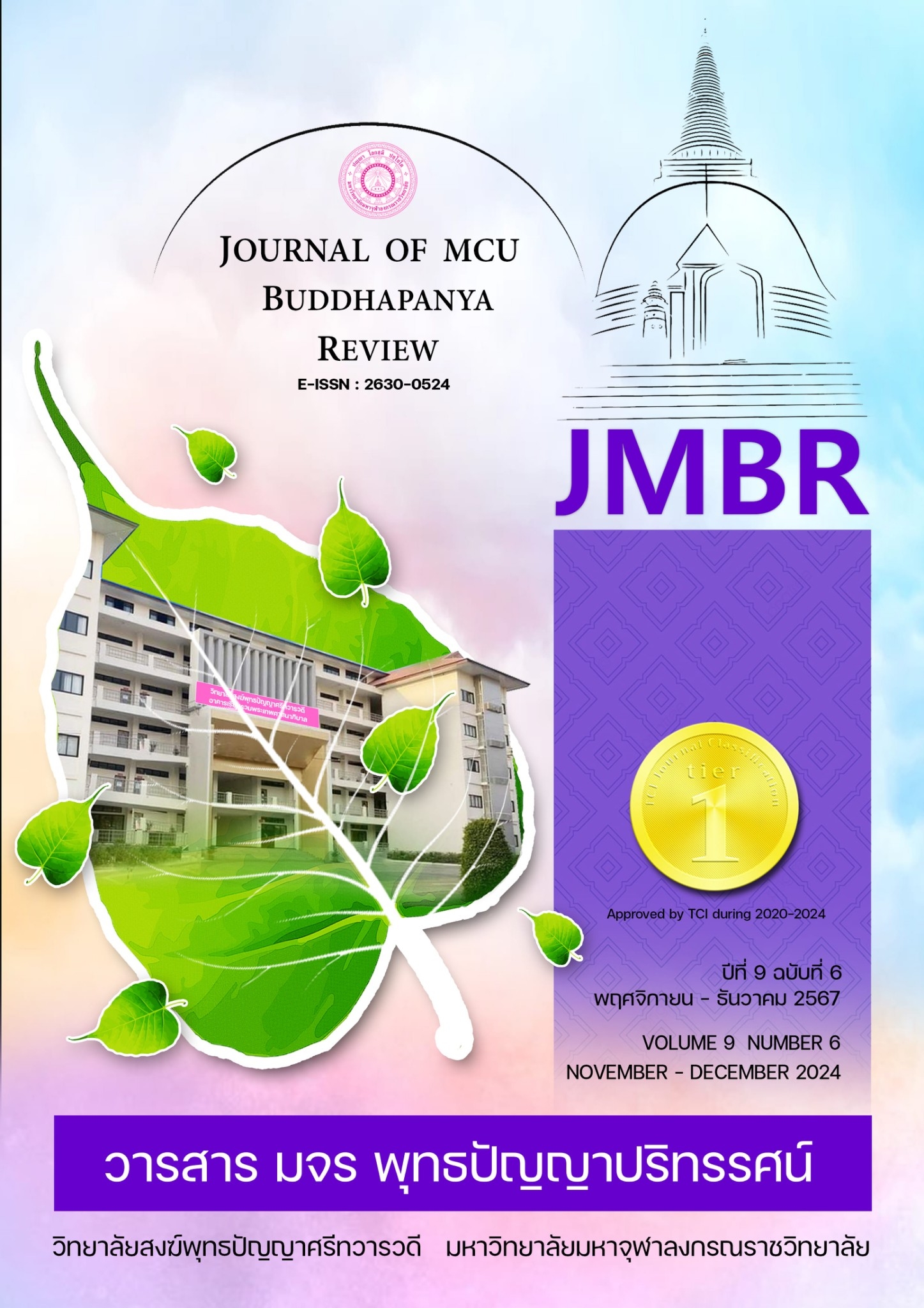การศึกษาความเหมาะสมในการบริหารจัดการพื้นที่บึงขุนทะเล อำเภอเมือง จังหวัดสุราษฎร์ธานี
คำสำคัญ:
การศึกษาความเหมาะสม, การบริหารจัดการพื้นที่, การวางแผนเชิงปฏิบัติการโดยชุมชนบทคัดย่อ
บทความวิจัยนี้มีวัตถุประสงค์ 1) เพื่อศึกษาระบบนิเวศของสัตว์บริเวณพื้นที่บึงขุนทะเล 2) เพื่อศึกษาแนวทางการจัดการระบบน้ำเสียภายในบึงขุนทะเล 3) เพื่อศึกษาวิถีชีวิตประมงพื้นถิ่นบริเวณพื้นที่บึงขุนทะเล 4) เพื่อศึกษาด้านสันทนาการบริเวณพื้นที่บึงขุนทะเล และ 5) เพื่อเสนอแนวทางความเหมาะสมในการบริหารการจัดการพื้นที่บึงขุนทะเล ที่มีพื้นที่ศึกษาตั้งอยู่ในเขตเทศบาลนครสุราษฎร์ธานี เทศบาลตำบลขุนทะเล เทศบาลตำบลวัดประดู่ องค์การบริหารส่วนตำบลมะขามเตี้ย ระเบียบวิธีวิจัยแบบผสานวิธีภายใต้กรอบแนวคิดการบริหารจัดการ การจัดการตนเองของชุมชนและท้องถิ่น และการวางแผนเชิงปฏิบัติการโดยชุมชน กลุ่มตัวอย่าง จำนวน 50 คน ได้แก่ กลุ่มผู้นำชุมชน จำนวน 23 คน กลุ่มตัวแทนองค์กรปกครองส่วนท้องถิ่นและหน่วยงานภาครัฐที่เกี่ยวข้อง จำนวน 14 คน และกลุ่มตัวแทนผู้ประกอบการภาคเอกชน จำนวน 13 คน ใช้วิธีการสุ่มตัวอย่างแบบเจาะจง เครื่องมือที่ใช้ในการวิจัย คือ แบบสอบถาม และระบบสารสนเทศภูมิศาสตร์ การวิเคราะห์ข้อมูลเชิงปริมาณด้วยสถิติพื้นฐานและข้อมูลเชิงคุณภาพด้วยการวิเคราะห์เนื้อหา
ผลการวิจัยตามวัตถุประสงค์ทั้ง 5 ข้อ พบว่า 1) ได้ฐานข้อมูลระบบนิเวศของสัตว์ที่หลากหลายโดยเฉพาะสัตว์ปีกจำพวกนกที่จำแนกเป็น 54 วงศ์ 113 สกุล และ 142 ชนิด ส่วนสัตว์น้ำมีปลาประจำถิ่นในแม่น้ำตาปี ได้แก่ ปลาทกหรือปลาเค้าดำ ปลาสร้อยนกเขาหรือปลาขี้ขม มีลิงแสมประมาณ 50-100 ตัว 2) ได้จัดทำแนวทางการจัดการระบบน้ำเสียภายในบึงขุนทะเล จำนวน 6 จุด พร้อมงานระบบท่อระบายรวมรอบพื้นที่บึงขุนทะเล 3) เกิดการพัฒนาและยกระดับศักยภาพของกลุ่มประมงพื้นบ้านและกลุ่มเกษตรกรในพื้นที่ ให้มีทักษะด้านการแปรรูปที่ได้รับมาตรฐานของหน่วยงานภาครัฐ การสร้างมูลค่าเพิ่ม การสร้างตราสินค้าของผลิตภัณฑ์ ช่องทางการจำหน่าย การส่งเสริมการอนุรักษ์และถ่ายทอดภูมิปัญญาท้องถิ่น 4) ได้จัดทำแผนการพัฒนา โครงการ และพื้นที่จัดกิจกรรมที่ด้านสันทนาการ และ 5) ได้จัดทำ (ร่าง) ข้อเสนอแนวทางความเหมาะสมในการบริหารการจัดการพื้นที่บึงขุนทะเล ภายใต้วิสัยทัศน์ คือ “บึงขุนทะเลยั่งยืน” และนโยบาย คือ “บึงขุนทะเลวิถีน่าเที่ยว ธรรมชาติสะอาด ผู้คนปลอดภัย” ภายใต้ 4 ประเด็นยุทธศาสตร์ 4 เป้าประสงค์ 25 กลยุทธ์ และ 25 ตัวชี้วัด
เอกสารอ้างอิง
Alameda County Public Health Department. (ACPHD). (2004). A Handbook for Participatory Community Assessments: Experiences from Alameda County. Oakland. CA: ACPHD.
Bangmo, S. (2019). Organization and Management. Bangkok: SE-EDUCATION.
Chalekian, P (2016). Instantiations of POSDCORB: A Framework-Theory-Model Approach. Administration & Society. 48 (3): 316–343.
Department of Provincial Administration. (2020). Official Statistics Registration Systems. Retrieved on November 14, 2022, from https://stat.bora.dopa.go.th/stat/statnew/statMenu/newStat/home.php
Gerhardt, M. W., Rode, J. C., & Peterson, S. J. (2007). Exploring Mechanisms in the Personality-Performance Relationship: Mediating Roles of Self-management and Situational Constraints. Journal of Personality and Individual Differences. 43(6): 1344-1355.
Gulick, L. & Urwick, L. (1937). Papers on the Science of Administration. Institute of Public Administration, New York.
Gleeson, B. (2008). Waking from the Dream: An Australian Perspective on Urban Resilience, Urban Studies, 45, 2653-2668.
Jaroensuk, P., & Tantra, T. (2022). Local Administrative Organization Management Leading to Excellence for Elevating Quality of Life of People in Sansai District, Chiangmai Province. School of Administrative Studies Academic Journal, 5(3), 1–13.
Konisranukul, W. (2007). The Substantive Urban Design Considerations: Priorities for Creating Successful Places. Journal of Architectural/Planning Research and Studies, 5(3), 91-107.
Kotchapong, S., Bunmee, B., & Rojanatrakut, T. (2020). Community and Local Self-management in a Changing Situation at Present. Journal of MCU Buddhapanya Review, 5(3), 191-202.
Likert, R. (1967). The method of constructing and attitude scale. In M. Fishbeic (Ed.), Attitude theory and measurement. New York, NY: Wiley.
Lincharearn, A. (2012). Qualitative Data Analysis Techniques. Journal of Educational Measurement Mahasarakham University, 17(1), 17-29.
Nophaket, N. (2011). Development for a Process of Community-active Planning : A Case of Prik Municipality’s Landscape Master Plan. Bangkok: Thai Health Promotion Foundation.
Office of Surat Thani Municipality. (2020). Get to Know the Municipality. Retrieved on November 14, 2020, from https://www.suratcity.go.th/web/index.php/th/home-th
Patrick, M. C., Cavens D., & Miller N. (2009). Urban Planning Tools for Climate Change Mitigation. Policy Focus Report. Lincoln Institute of Land Policy. Cambridge, MA.
Phongphanich, N. (2023). The Disaster Management Guidelines for Coastal Communities around Bandon Bay at Surat Thani Province, Thailand. The Golden Teak : Humanity and Social Science Journal, 29(2), 79-98.
Phongphanich, N., Mueangkaew, K. & Aupala, J. (2023). Management of Cultural Heritage and Local Wisdom of Hainan Chinese People at Koh Rat, Donsak District, Surat Thani Province. Journal of MCU Buddhapanya Review, 8(3), 287-302.
Phongrod, Y., Bodeerat, C., Bodeerat, S., & Pradit, R. (2019). Guidelines for Community Master Plan on Ecological Conservation, Wisdom and Utilization of Natural Resources in Kha-Muen WatershedArea by Focusing on the Participatory Process. Journal of Interdisciplinary Research: Graduate Studies, 8(2), 92-103.
Phookhokwai, P. T. and Phrathepsatsanaphiban. (2022). Driving Mechanism Model of Economy and Society in the Development Capital of Resource and Thai Cultural Capital. Journal of MCU Buddhapanya Review, 7(1), 254-269.
Phoomravi, N. (2016). Participation Processes in Preparing the Community Master Plan in Tambon Wangtakor, Amphoe Langsuan, Changwat Chumporn. Parichart Journal, Thaksin University, 23(2), 81–100.
Srisa-ard, B. (2013). Introduction to Research. (9 th ed.). Bangkok : Suweeriyasarn.
Taylor, N. (2007), Urban Planning Theory since 1945, London, Sage.
Thongyai, K., Kanmarangol, S. & Pummarin, U. (2021). The Development of a Learning Center for Bird Ecology in the Khun Thale Wetland. Complete Research Report Presented to the National Science and Technology Development Agency (NSTDA) for the Fiscal Year 2020.
Tipmanee, S., & Koetwichai, N. (2019). POSDCoRB and Good Governance for Startup in Thailand 4.0 era. Journal of MCU Humanities Review, 5(1), 73–88.
Udompidok, P. & Acarapali, P. P. (2019). Development of Geo – Informatics System and Potential for Tourism in Uttaradit. Journal of MCU Buddhapanya Review, 4(3), 527-542.
United Nations Development Programme (UNDP). (2015). Ache-Nias Settlement Support Program: ANSSP Guidelines. CAP (Community Action Plan) and Village Mapping. UNDP. Retrieved on November 14, 2022, from http://www.unhabitat-indonesia.org/files/book-1407.pdf
United Nations Human Settlements Programme (UN-HABITAT). (2007). People's Process in Post-disaster and Post-conflict Recovery and Reconstruction: Community Action Planning. Fukuoka: Regional Office for Asia and the Pacific, UN-HABITAT.
Wheeler, S. (2004), The Sustainable Urban Development Reader.
Wilson, E. (2006). Adapting to Climate Change at the Local Level: The Spatial Planning Response. Local Environment, 11(6), 609-625.
ดาวน์โหลด
เผยแพร่แล้ว
รูปแบบการอ้างอิง
ฉบับ
ประเภทบทความ
สัญญาอนุญาต
ลิขสิทธิ์ (c) 2025 วารสาร มจร พุทธปัญญาปริทรรศน์

อนุญาตภายใต้เงื่อนไข Creative Commons Attribution-NonCommercial-NoDerivatives 4.0 International License.



